Construction permit approvals for coastal projects fast-tracked during Pierluisi’s 1st year

By Víctor Rodríguez Velázquez | Center for Investigative Journalism
Far from slowing the pace of construction on Puerto Rico’s coasts to address climate change, as experts have requested, Gov. Pedro Pierluisi’s administration hit the accelerator to approve construction permits along the coasts.
During his first year in office, and well into the pandemic, approval of construction permits on the coast increased 29%, compared to 2020, according to data from the Permits Management Office (OGPe, in Spanish) analyzed by the Center for Investigative Journalism (CPI, in Spanish).
In total, the construction permits granted for projects on Puerto Rico’s coasts increased 239% when comparing permits granted in 2015 with those approved in 2021. According to OGPe, digital data is available only from mid-2014 to the present due to a change to the digital platform the agency uses to document permits.
Of the 20,048 construction permits approved during that seven-year period, 65% were for one of the 44 coastal towns, where some projects are close to the coastal zone and others further inland. Although during the past seven years construction permits to coastal towns have exceeded 60% with respect to the universe of these approved annual procedures, both in 2020 and 2021 the figure was at the highest point, with 68%.
Projects that have been authorized on the coasts are, for the most part, hotels, homes, or businesses. Very few are aimed at addressing the effects of rising sea levels, coastal erosion, flood mitigation and protecting vulnerable communities with hydraulic piles, artificial reefs, restoration of dunes and mangroves, placement of boulders, drainage systems or retaining walls, the analysis showed. Sixty percent of Puerto Rico’s 3.2 million residents live in coastal towns, according to data from the 2020 Census.
The fast-tracked coastal development underway since Pierluisi’s arrival at La Fortaleza is contrary to the provisions of the Mitigation, Adaptation and Resilience to Climate Change in Puerto Rico Act that took effect in May 2019, specifically Article 9, which states that coastal planning must be implemented to address rising seas while directing new development away from the coastlines. It also clashes with the recommendations of the Committee of Experts and Advisors on Climate Change that the government created in response to this Act and whose members have recommended eliminating new constructions on the coasts.
Although climate change and erosion especially affect all people living on the coasts, there are upper-class communities that are building their own mitigation and adaptation projects, while the poorest are at the mercy of government action. The former is more likely to stay in their homes, the latter may have to migrate to protect themselves.
This inequality associated with the effects of the climate crisis is evident at Guanajibo Homes in Mayagüez.
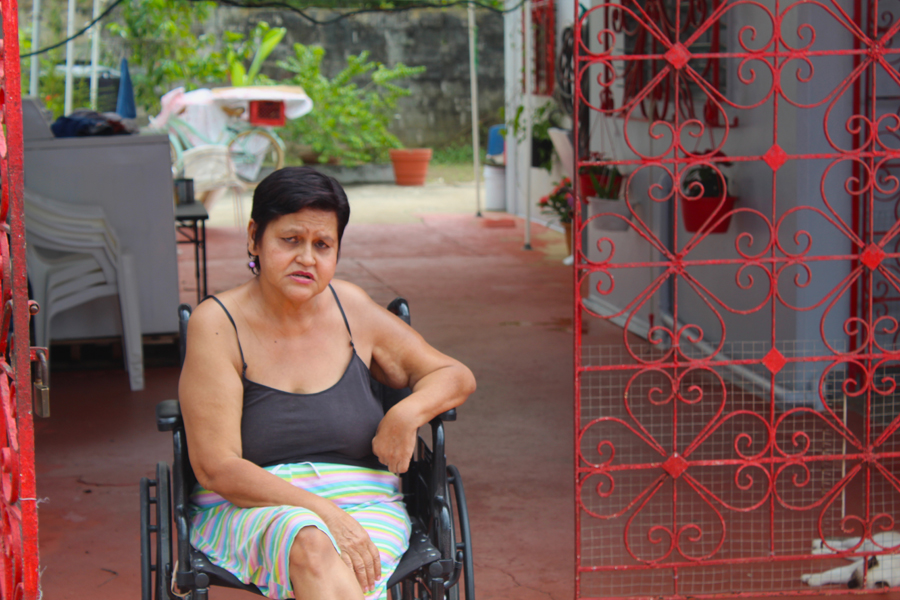
Sitting in her wheelchair in front of the gate to her driveway, Zaida López looks at her husband, Rafael López, who is on the floor painting part of the wall that faces the street. They have been living in this community for 15 years, but they hope to soon relocate to a “safer” home.
The Guanajibo Homes community, developed in the 1950s, comprises three streets with about 260 houses, of which about 75 are empty. For the residents, the area “is an island” itself because it faces Highway 102, which leads to the ocean, on one side the Corazones Stream and on the other the mouth of the Guanajibo River. Two bridges at each end of Highway 102 are the only evacuation routes.
Because Zaida and Rafael lost everything when the river flooded their house during Hurricane María, they applied to relocate to another house through the Puerto Rico Department of Housing’s Repair, Reconstruction or Relocation (R3) Program, financed with federal CDBG-DR funds earmarked for recovery from the storm that struck in 2017.
“I’m leaving, because of the situation, because my nerves are affected, and because of the experience we had with María. I can’t afford to go through something like that again,” said Zaida, who is still waiting for the R3 process even though the relocation was approved two years ago.
For years, the community has made multiple requests to the municipal and central government to find solutions that help mitigate flooding and the ravages caused by coastal erosion. For example, several neighbors are fighting to maintain one last sand dune that separates part of the coast from Highway 102.
Fishermen launch their boats into the sea from there, although there is no dock. Talks with the Department of Natural and Environmental Resources’ (DRNA, in Spanish) Hormigueros regional office began in December, but nothing has happened yet, said community leader Rosario Davis.
“The road [102] is falling apart. In one or two years they will have to build a new road. But that takes time, and they’re looking the other way,” said Luis Hernández, a 52-year-old upholsterer and resident of Mayagüez. His grandmother, Judith Vélez Rivera, 93, has lived in Guanajibo Homes since the community was founded.
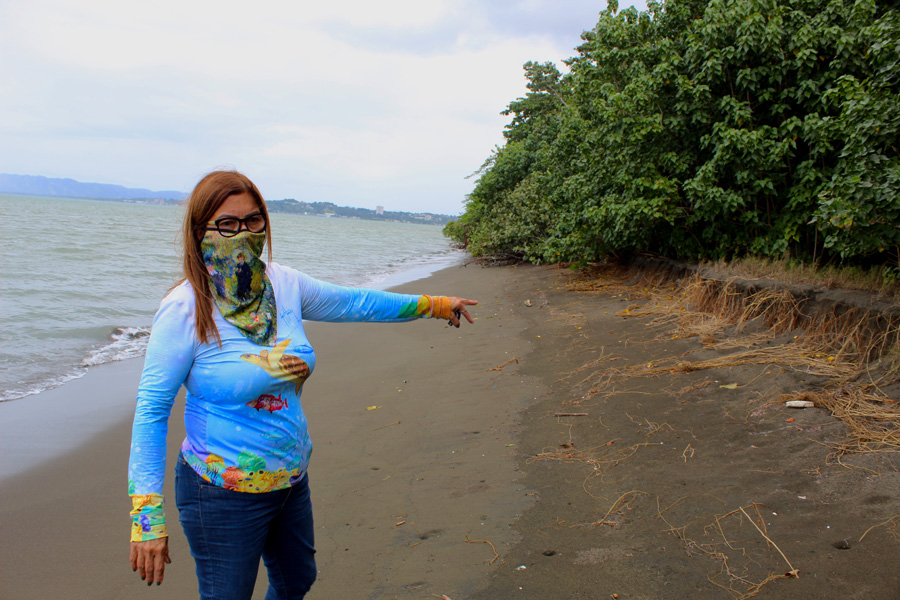
Given that Mayagüez Mayor José Guillermo Rodríguez was unavailable for interview, the town’s Vice Mayor, Engineer Jorge Ramos, explained that the municipality is working on a project to address the situation in Guanajibo Homes with the help of non-governmental organization Protectores de Cuencas, with whom they hope to outline the most viable options to mitigate coastal erosion.
He explained these initiatives are complicated because, since it is a main road, they involve the participation of the DRNA and the Department of Transportation and Public Works. Ramos said the proposal development is on track, but there will still be meetings with the heads of both agencies to establish the guidelines.
Meanwhile, DRNA Secretary Rafael Machargo told the CPI that the agency’s rangers concluded that the sandy area that the Guanajibo community is defending is not considered a dune but said he will request a more in-depth investigation to learn all the details of the area.
The struggles of the residents of Guanajibo Homes to mitigate the effects of rising sea levels — associated with climate change — contrast with immediate measures that other communities in Puerto Rico with greater income have been able to initiate on their own.
That is the case of Palmas del Mar in Humacao, where residents are evaluating a coastal mitigation project in front of The Marbella Club at a cost of up to $1.5 million. The DRNA and the OGPe are evaluating the proposal.
In an email sent to the residents of The Marbella Club, to which the CPI had access, Joseph McCloskey, president of the complex, explained that the engineering and construction firm Tetra Tech is overseeing the project’s design. The project will consist of the placement of boulders for a breakwater and a concrete promenade along the coastline that borders the four buildings.
According to the proposal, the engineering firm made an inquiry to the US Army Corps of Engineers (USACE), but on October 15, 2020, the federal entity informed them that the project is “outside its jurisdiction.” On October 16, the DRNA’s Puerto Rico Coastal Zone Management Program told them that the project will not require a USACE certification.
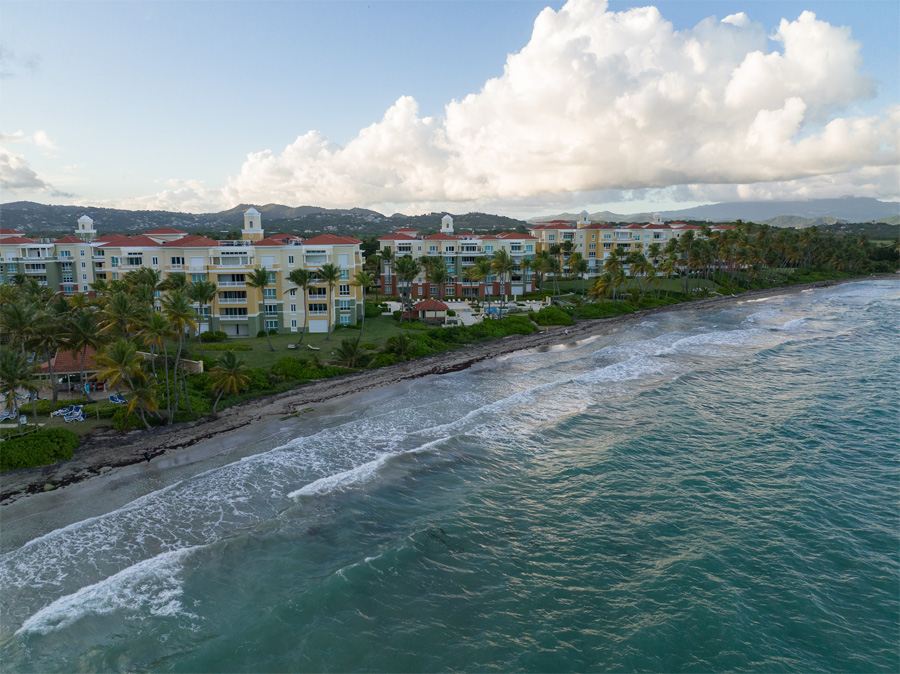
USACE explained to the CPI that the determination was made because the proposed project would not be in United States navigable waters, “it doesn’t involve dredging or discharge of material to fill water.”
The DRNA Secretary said he was unaware of the details of that project when he was asked for a reaction.
In the case of Guanajibo Homes, the USACE is planning a dam to channel the river. To do this, the federal agency cut down two paths of mangroves and filled them with rocks. However, the neighbors said no one has been to the site since June, causing fears for their safety due to the constant flow of people into the unrestricted deforested area.
The federal entity rejected the complaint from the Guanajibo Homes community, arguing that, since the project is in the design phase, they don’t have jurisdiction or full responsibility to restrict access to the area. It was said that this responsibility falls to the DRNA until USACE begins construction of the dam, which would run from Hormigueros to Guanajibo Homes, and is projected to begin in 2025 and end five years later. There is still no estimated cost for the project, the federal entity confirmed.
Machargo was also unaware about the issue of open access to the area that USACE cut down and said he would send the agency’s rangers to investigate.
Attorney and community leader Ruth Santiago, who is part of the White House Environmental Justice Advisory Council, believes the way that certain communities can address their environmental challenges quicker, versus those that lack the resources to do so, could respond to an element of environmental injustice.
“That happens when more disadvantaged communities, mostly Afro-descendants, don’t have the resources to face the climate crisis in contrast to the higher classes,” Santiago warned.
Since September 2021, the CPI has requested an interview with Gov. Pierluisi on multiple instances to learn his vision of public policy on climate change, coastal construction, and the short-term mitigation measures that his administration is taking, but he rejected the petitions.

In a press conference, the CPI asked him about his plans or guidelines for managing areas vulnerable to climate change, especially in coastal towns.
Pierluisi said he adopted 87 out of the 103 recommendations made by the Committee of Experts and Advisors on Climate Change regarding the measures to be followed to face coastal erosion and its impact. He said he will reveal the recommendations he adopted after getting the input from other agencies — such as the Puerto Rico Planning Board and the Department of Economic Development and Commerce — with which he shared the report for evaluation. He did not specify when this would happen.
“Right now, there’s a regulation that the DRNA has had in place since 1978; a coastal development management plan. One of the things that the Committee recommends, if I remember correctly, is to review it, update it; I agree with that. But there are details that I haven’t yet decided on, for example, defining the precise strip of land that will be protected. The Committee did make recommendations, but I need advice from other agencies,” Pierluisi said.
Pablo Lázaro, one of the scientists sitting in the Committee, said there has been inaction on the Governor’s part, who urgently requested the recommendations to be delivered in September 2020, “and none of them have been implemented.” The DRNA Secretary chairs the Committee, and he has been criticized for his inaction in protecting the environment, including coastal zones, and in his view it is not necessary to stop construction on the coast but make sure those projects “are executed well,” he told the CPI.
“If I’m a responsible owner, I have to build considering the reality that there has been a 70% rise in sea levels at the coasts. And they must consider the experiences of [hurricanes] Irma and María and build upon these two realities,” Machargo said later in the conversation.
The north and west regions have the most coastline constructions
The problem of coastline construction when climate change has intensified has been pointed out for years by researchers, academics, and community leaders, and even by politicians, such as Puerto Rican Independence Party Senators Juan Dalmau and María de Lourdes Santiago.
During the previous administration, Dalmau, and Santiago in the current, have submitted legislation for the approval of a Puerto Rico coastal law. Meanwhile, in June 2020, Reps. José Pérez Cordero, of the New Progressive Party, and Lisie Burgos Muñiz, of the Dignity Project party, presented a bill to create the Development and Coastal Protection Committee Act.
“I’m waiting to see what happens with these bills and, if they reach my office, then I will evaluate them with guidance from the Committee of Climate Change Advisors, among others,” Pierluisi said.
However, the OGPe has continued to approve construction and infrastructure development permits on the coasts of the Puerto Rico archipelago.
According to data from that agency that the CPI analyzed, nine of the top 10 coastal municipalities in which the most construction permits have been approved between 2015 and 2021 are along Puerto Rico’s north and west. These are San Juan (1,489), Guaynabo (635), Aguadilla (612), Arecibo (612), Dorado (544), Mayagüez (541), Isabela (530), Manatí (443), Rincón (398); and Cabo Rojo, in the southwest (527).
“There has been a mentality of destruction here, as if they [the coasts] were a gold mine. If the dunes are worth money, then they will sell them, when they’re in the public domain. There are people who have been allowed to benefit from these public domain assets, they have privatized them and used them for personal benefit, when we know that this has a function [as a natural barrier],” said Ruperto Chaparro, director of the Sea Grant program of the University of Puerto Rico (UPR) Mayagüez Campus, during a conference in October.
Given this scenario, Geomorphologist Maritza Barreto Orta — who has investigated coastal erosion in Puerto Rico for two decades — warned that new construction on the coast should be stopped to avoid a greater impact on communities living near the sea. The professor at the UPR Río Piedras Campus recommended evaluating the existing infrastructure and tempering it to the new environmental and climatic conditions that Puerto Rico faces.
“We’re out of time. It’s no longer possible to continue building new structures on the coasts. The priority is to adapt what was built in places that shouldn’t have been developed. Integrated planning must be carried out, [those properties] must be protected with the best mitigation strategies,” warned Barreto Orta, who is a member of the Government’s Committee of Experts and Advisors on Climate Change.
The professor also warned about the need to establish mitigation projects in these areas, noting that most of the vital infrastructure is located on Puerto Rico’s coasts: 11 airports, seven power plants, 100 kilometers of water infrastructure, and 81 industrial parks.
Although she promotes the development of natural barriers on the coasts, Barreto Orta recognizes that, due to how impacted certain areas are already, there are places where it would be necessary to opt for specific infrastructure to deal with the rise in sea level.
“The best thing would be to use a natural structure… If it is believed that the area is very affected, the second alternative would be a hybrid, or with something natural and something gray [concrete or boulders]. If that doesn’t work either, I would look at a gray structure, but not just any, like walls, which can cause more erosion,” she said.
Governor skirts the issue of Climate Change
So far, the Governor has avoided addressing the claims against the development model that prioritizes infrastructure over harming natural barriers.
This was the case last year, when there were protests at the Sol y Playa complex in Rincón, because residents were promoting rebuilding a swimming pool that had been destroyed by Hurricane María’s storm surge and whose structure — now situated in the maritime-terrestrial zone due to beach erosion — would endanger the nesting of turtles. Walter Pierluisi Isern, the Governor’s cousin, owns an apartment in that housing complex.
The Pierluisi Administration’s lack of interest for natural barriers has also been evidenced by the endorsement given to the development of the Fairfield Inn & Suites hotel, owned by the Marriott chain, in Luquillo and that, according to environmentalists and community leaders, would affect a wetland in the eastern region.
The hotel, which is expected to open in March 2023, is proposed by the Luquillo Hotel Company, whose parent company is Federico Stubbe’s PRISA Group, a major donor to the New Progressive Party and developer of other coastal projects such as the Dorado Beach residential-tourist complex and the T-Mobile District in Isla Grande.
Puerto Rico’s coastal wetland and marsh areas are regulated by the 1899 Harbors and Bays Act and the Federal Clean Water Act (CWA), as well as by US Corps of Engineers and the federal Environmental Protection Agency regulations. However, these provisions appear to be a dead letter for the economic model followed in Puerto Rico.
Machargo said this proposed project for Luquillo is under investigation. “The information I have is that [the DRNA] asked for much more than what the USACE asked of them, and they were very protective of wetlands and habitats. But obviously, there have been complaints and we’ve sent officials to check that everything is within the law. When the investigation runs its course, the DRNA’s guidelines will be followed and he will be treated like anyone else,” Machargo assured.
The CPI asked Pierluisi if his administration is considering limiting or regulating the granting of permits for coastal construction and he said it is a possibility that is still under analysis to strike “a fair balance or a compromise” between economic development and environmental protection.
“The issue is that you have to decide if there’s going to be (some kind of) a moratorium [on construction permits on the coasts], its scope and its applicability, because it’s one thing to say that there’s going to be a moratorium on the island whole, and another thing to say: ‘we’re going to have a moratorium in a particular area that has been seriously affected by coastal erosion.’ Those are the things that are being evaluated,” said the Governor.
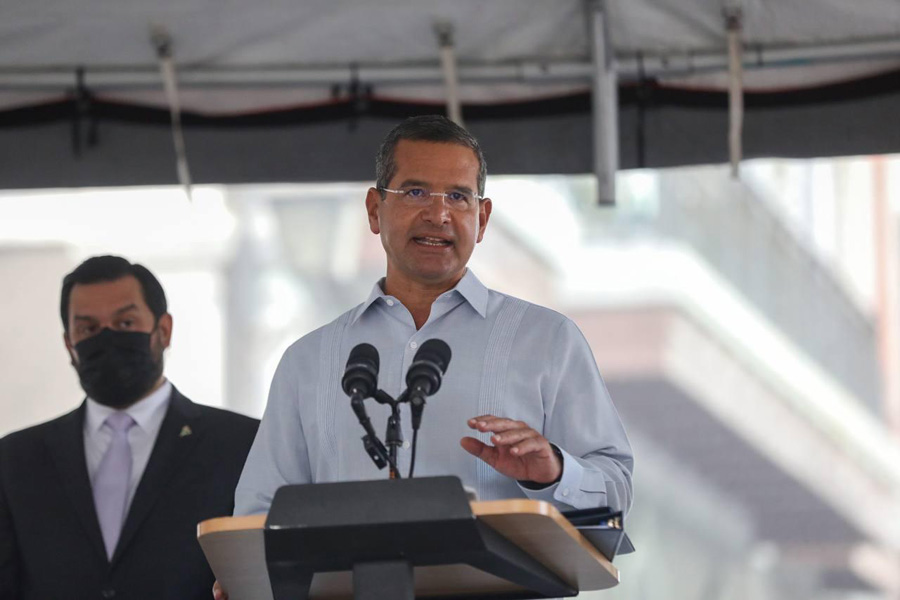
Meanwhile, Machargo did not want to share his opinion on whether this moratorium should be established and refused to respond to the CPI on what his recommendation to the Governor would be on this matter.
“If the Governor asks me for a recommendation, I will gladly give it to him, but in private, because I don’t like to anticipate what I’m going to recommend to the Governor,” he said.
But what is your opinion about a moratorium? the CPI asked.
“Whether there is any cause of emergency has to be evaluated. We can’t call for a moratorium for the sake of calling for a moratorium. It has to be evaluated and it has to have a purpose.”
So, then, are you distancing yourself from the opinion of the rest of the members of the Committee of Experts and Advisors on Climate Change who are asking for a moratorium? the CPI insisted.
“Since this is under the Governor’s evaluation, I prefer to discuss it with him, without discussing it publicly, so that my advice is the most objective for the Governor. Once the Governor decides, we can discuss this further,” Machargo replied.
Regarding what other options can be considered to mitigate the impact on the coasts in the absence of a moratorium on new construction, Machargo acknowledged that the evaluation of the granting of permits must be reinforced.
“To protect the coasts, it’s important that the permit systems are clear when it comes to building in the coastal zone and that the most complete evaluation possible is available. It’s also important to have resources, such as staff in each agency, to evaluate those documents,” he said.
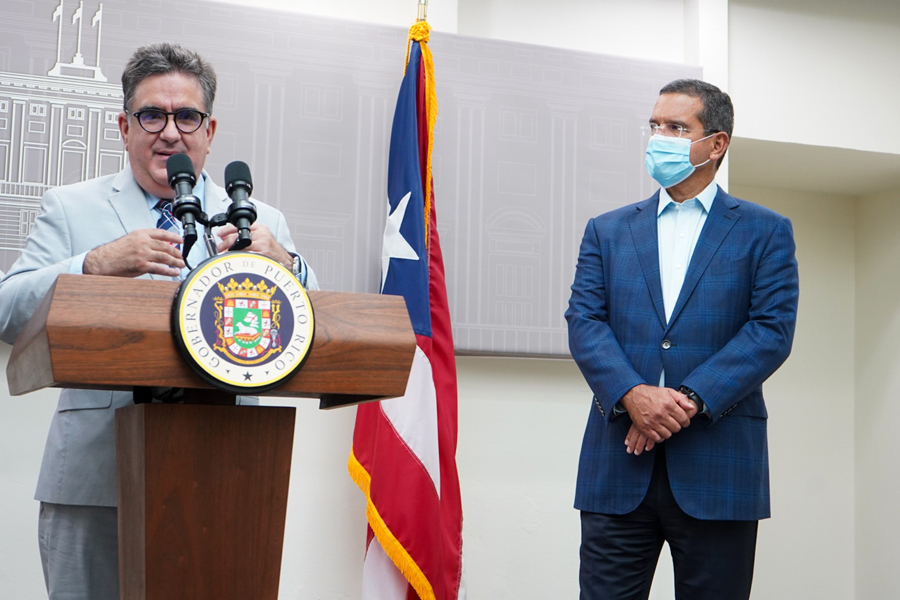
Attorney and environmental law professor, Érika Fontánez, believes searching for a balance between environmental protection and economic development is not realistic.
“When a dispute comes up, the government or the private parties always say ‘you have to have a balance between the economy and the environment,’ but that balance never exists. In other words, when people draw attention to a problem, it means that there’s already an imbalance, habitat loss has already been caused, damage that’s almost irreparable or that people or communities have been disproportionately affected in terms of health,” Fontánez said.
“The State and agencies like the DRNA are supposed to be the ones that represent the public interest and take care of protecting the environment, but one listens to the secretaries of the agencies, such as the Natural Resources Secretary, and in reality, it’s as if you closed your eyes and heard economic development officials,” the professor pointed out.
Climatologist Rafael Méndez Tejeda reiterated the urgency of defining “a new coast” in Puerto Rico that would allow to better establish the construction sites, away from the risk caused by rising sea levels.
“We have a new reality with climate change. Before, you could have constructions as close as 160 feet from the coast, but today there are structures as little as 120 feet away. We must adapt to that reality. We don’t expect that reality to change. We aren’t going to get the coast back, on the contrary, the expectation is that it will continue to erode,” he warned.
Over the next 30 to 40 years, the ocean will rise by around three feet, according to estimates from the United Nations Intergovernmental Panel on Climate Change, the world’s leading expert group on the subject, and the National Oceanic and Atmospheric Administration (NOAA).
Coastal permitting is big business
Construction on the coasts has also been mostly in the hands of a handful of firms and people that are dedicated to processing and managing the different permits required for developments in Puerto Rico at the OGPe and the DRNA, which is responsible for evaluating constructions concessions in the maritime-terrestrial zone or of environmental impact.
Among them, the CPI found that CMA Architects and Engineers, LLC — an architecture and engineering firm founded in Cuba in 1948 as SACMAG — has filed the most petitions with OGPe related to high-impact projects in the past seven years.
This firm arrived in Puerto Rico in the late 1950s to work on projects with the Bacardí rum distillery. Engineers José Luis Capacete and Ignacio Martín established it here in 1959. For six decades, they worked as Capacete, Martín & Associates, until 1989, when they changed to the current name, after that same year CMA firm executives were involved in the Caguas Central Federal Savings Bank fraud and bankruptcy case.
From 2014 to 2021, this firm has processed a total of 1,388 general permits in Puerto Rico, of which 86% have been for coastal towns and 21% of them have been construction permits.
Pedro A. Janer is the person who has overseen the most procedures in OGPe on behalf of CMA, with a total of 1,232. In addition to construction permits, this firm has stood out for managing procedures for the Determination of Environmental Compliance via Categorical Exclusion, a regulation that was in place until last year and had 118 exceptions that did not have to go through the rigorous process of environmental compliance, such as low-budget light constructions, legalization of pre-existing constructions or improvements to already-permitted facilities. Through an administrative order from the DRNA dated January 2021, this process was included in the procedures to be completed in applications for construction permits.
Among the projects that have benefited from CMA’s oversight are the Four Seasons Resort at Cayo Lago tourism development in Fajardo (between 2016 and 2020) and the EOS Facility PR14 pharmaceutical project (between 2017 and 2020). CMA also oversaw construction permits for the Atlantic Estates at Bahia Beach Resort, in Río Grande, the JW Marriott Hotel & Marriott Vacation Club International Tower and the reconstruction of the Dorado Beach Resort to Ritz Carlton Reserve, both in Dorado. CMA did not respond to requests for interviews from the CPI.
For Fontánez, the problem with the excessive granting of permits is not necessarily in the procedures and who does them, but in the Puerto Rico Permit Process Reform Act of 2009, which “has done away with important environmental ordinances.”
“[Ex-Governor Luis] Fortuño passed that law and then other governors came along, and it has basically been upheld. Over the years, the power of the Environmental Public Policy Law was taken away…,” the attorney said.
The Permits Act and the joint permit regulations “have facilitated the dilapidation of land, urban sprawl and poor planning of the coasts and in the mountains,” she added.
Construction in Dorado erases beach pedestrian crossing
In Dorado, one of the towns in Puerto Rico that has communities with higher incomes and where some of the beneficiaries of Acts 20 and 22 are clustered, and seek to attract high capital investors as a measure to move the economy, projects and infrastructure — such as the putting up retaining walls or place rocks to mitigate storm surges — will protect mansions at the expense of the coastline.
Engineer Ángel Cabán González shared with the CPI several complaints that he has filed with the DRNA related to the development of three projects in Dorado, Vega Alta and Cabo Rojo that he considers illegal.
Cabán González believes these projects “completely eliminate the strip of pedestrian sand. Furthermore, they only protect private property, to the detriment of the public domain.”
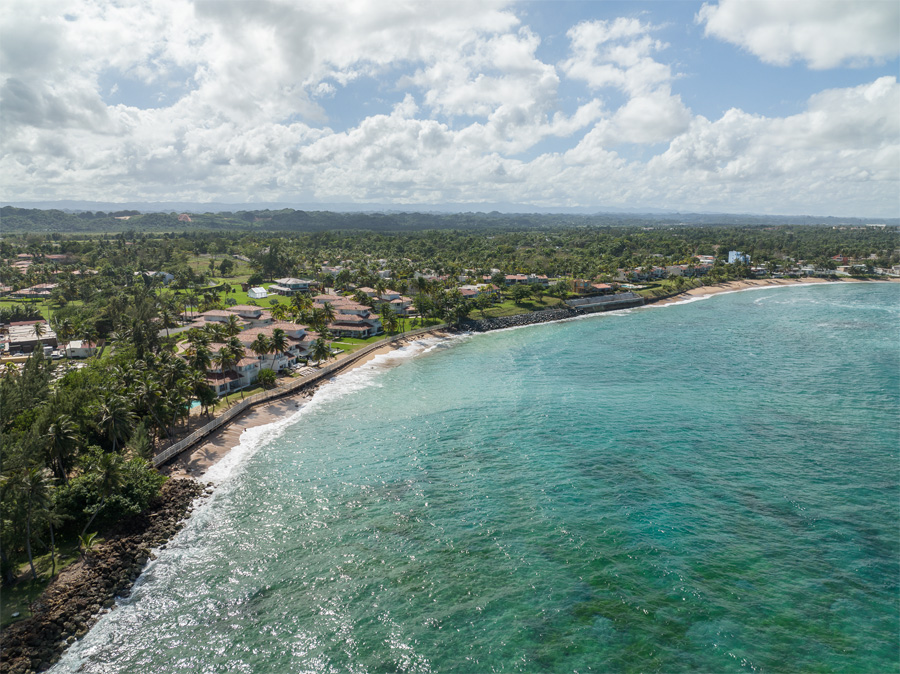
In the case of Dorado, the complaint alleges that “the constructions eliminated the coastline and prevented walking freely” in front of the beach. This project has three permits approved by the OGPe for construction and environmental compliance.
The CPI found that this project also has an emergency permit for construction in the maritime-terrestrial zone (ZMT) approved by the DRNA in July 2020 to the Dorado Reef Owners Association. The DRNA is still evaluating a request for the reconstruction of a breakwater and the stabilization of slopes in the ZMT there.
Meanwhile, The Cottages of Dorado Beach Project, where the development of a breakwater is underway, has not requested any permits or gotten approvals from OGPe for the reconstruction of this infrastructure, according to the database provided by OGPe to the CPI. Neither ZMT concession permits nor ZMT demarcation from the DRNA were identified for this area.
Dorado Mayor Carlos López did not grant the CPI an interview. Through his press spokeswoman, Lynette Moreno, he said “the municipality does not grant permits” for construction. Moreno did not respond if the municipality had been consulted for this project or for the approval of the construction permit.
The Secretary of Natural Resources said he was unaware of these complaints but assured that he would investigate them.
Excessive mangrove deforestation denounced in Salinas
The weakening of natural barriers, such as mangroves, sand dunes, wetlands, coral reefs, and marine plants, is also evident in southern Puerto Rico.
In Salinas, for example, an extensive mangrove area has been deforested to park vacation trailers. There are also concrete construction areas on the shore.
The complaint reached the CPI through three fishermen who spoke anonymously for fear of reprisals.
On a boat trip from the Playita sector, passing through Punta Arena and arriving at Las Mareas, the CPI was able to observe the abysmal contrast between the spaces with mangroves and the opening for the trailers.
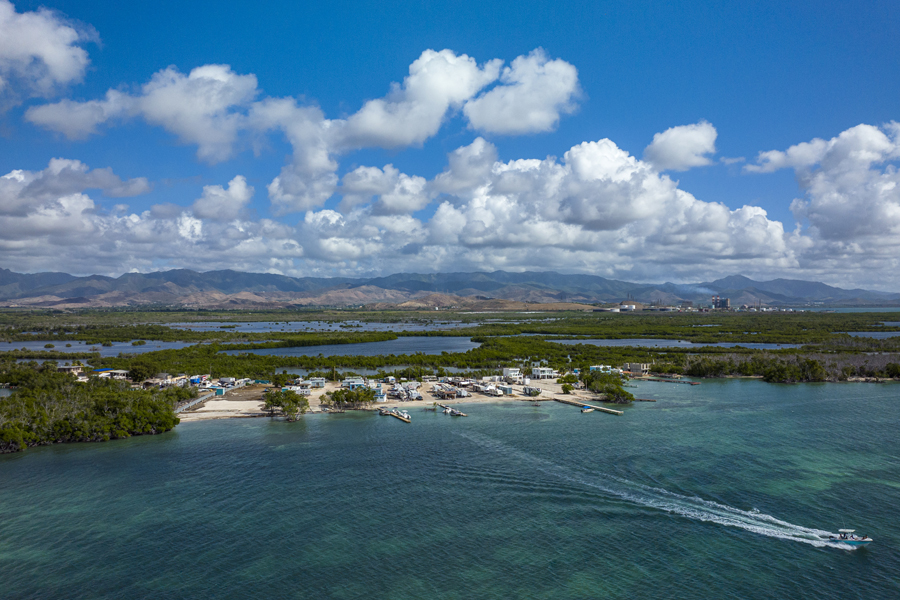
“This has been about five years of deforestation and clearing of mangroves and filling of wetlands. In fact, they fill them up at night to solidify the soil. A hurricane will sweep the entire area away. For example, Las Mareas, where about 60 families live, which is closer to the open sea and more exposed,” said one of the fishermen, whom we will call Juan to protect his identity.
The mangroves deforestation there increased after Hurricane María, he said.
According to the fisherman, the dynamic is as follows: developers invade land, deforest mangroves, and fill in wetlands to sell plots of land.
After the mangroves were chopped down, the three fishermen noticed a decrease in the diversity of fish that they usually caught in the area. They believe that the deforestation has caused the scarcity of several marine species, such as “arrayao,” sama, snappers, yellowtail, and lobsters, which also has an impact on the fishermen’s economic survival.
“This problem also occurs in the Playita sector, where the fish market is located. The fishermen say that a person appropriated a plot of land next to the fish market and has continued deforestation to prepare an area to rent spaces to park private boats,” said Juan.
The three fishermen agreed that the DRNA has ignored the situation.
“Complaints have been made, the DRNA rangers go, but all the complaints are dropped. We even spoke with the Secretary [of Natural and Environmental Resources] and he has ignored it. Through a person close to the official, we were told that the Secretary doesn’t want to intervene because these projects involve ‘gangsters’,” Juan said.
The negligence condemned by the fishermen could respond to the dismantling that the DRNA has suffered in the past decades in which powers, employees and funds to better monitor and protect Puerto Rico’s environmental resources have been eliminated.
“If you have a DRNA and you don’t have geologists, biologists, hydrologists, or you don’t have someone to demarcate the maritime-terrestrial zone, then you have to leave all that in private hands. The private sector will of course tell you ‘I’m submitting all this and I’m submitting it correctly and according to the law’,” when that is not necessarily so, Fontánez said.
For the environmental lawyer, the DRNA’s situation responds to a gradual process of privatization of the agency.
“What the State has done is eliminate its officials, it removed them under Law 7 [of 2009 for the dismissal of public employees], it removed the people it could and instead of hiring permanent people and career employees, they dedicated themselves to bring people with positions of trust by spending hundreds of thousands of dollars on those positions and privatizing duties that were previously performed by agency employees,” she said.
Back on land, the CPI went to Las Mareas to observe the area from the other side of the developments. After going through several structures, some abandoned, the plot with trailers came to view. At the entrance of the site, a small wooden sign reads: “Welcome to the Camper Paradise.”

Through the gates where the trailers are located you can see the ocean in the background, something that does not happen in nearby houses from where you can only see part of the mangrove.
The fishermen allege that the municipality of Salinas has been complicit in these developments, because although they have filed the complaints, once the area was established, the municipal government has “helped” them with electricity and drinking water connections.
Salinas Mayor Karilyn Bonilla Colón dismissed these accusations by saying that the municipality does not have the power to manage these types of connections.
“The municipality has never supported or installed water or electricity connections in any residence, or in Las Mareas, or in any other community. It is generally known that these tasks are carried out by the Puerto Rico Aqueduct and Sewer Authority and the Puerto Rico Electric Power Authority, respectively, after the proponents request the necessary permits. In fact, the Regional Permits Office, which is part of the [regional CCVS-Coamo, Cayey, Villalba, Salinas] consortium, has not endorsed or issued permits in that area,” she told the CPI in written statements.
Bonilla Colón said that she, Municipal Legislature, and community leaders reported the illegal deforestation of mangroves and alleged illegal sales of protected land to the DRNA, as well as have done site visits with the presence of officers from the DRNA Ranger Corps, and are waiting for action.
“We reiterate our position regarding Las Mareas: as it’s an area under the DRNA’s jurisdiction, it’s up to the agency’s officials to inform us about their efforts there. In fact, on October 18, 2021, Secretary Rafael Machargo publicly reported an eviction process [of the trailers], which he hasn’t carried out so far,” he said.
Machargo said the matter is being handled and that action will be taken “soon.”
“This is a case that I can’t share much information about until it is submitted, because in the past there have been threats of physical harm against our personnel. It’s a case that concerns me and that is a priority for the Department, as well as for NOAA. I prefer to be cautious, but we’re aware and we’re taking action,” he explained.
The CPI asked why it has taken two years to address the claims of the Salinas community, even the mayor, but the official insisted that this kind of procedure takes time.
“Since I took office, we’ve identified the funds and we’ve spoken with the federal agencies and we already have the resources to take action and action will be seen soon,” he replied.
This investigation was possible in part with the support of Para la Naturaleza, Open Society Foundations and Fondation Connaissance et Liberté (FOKAL).Víctor Rodríguez Velázquez is a member of Report For America.






